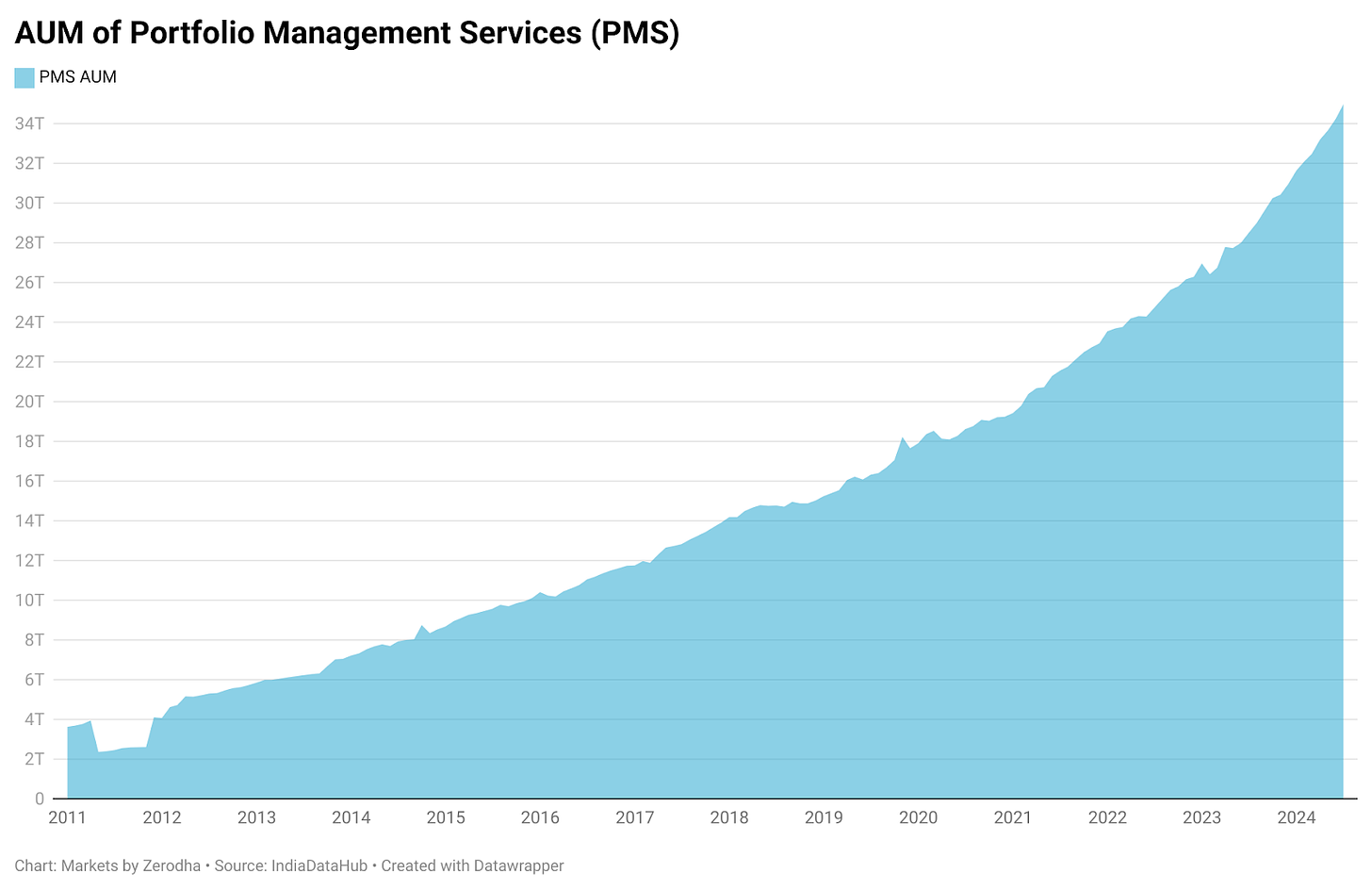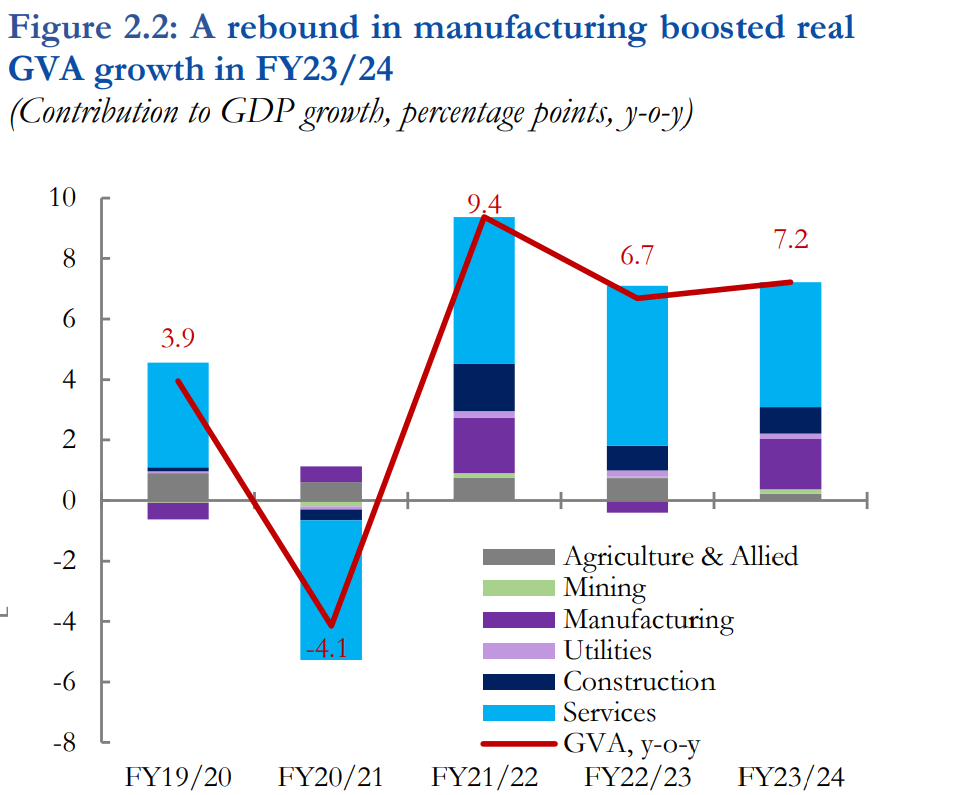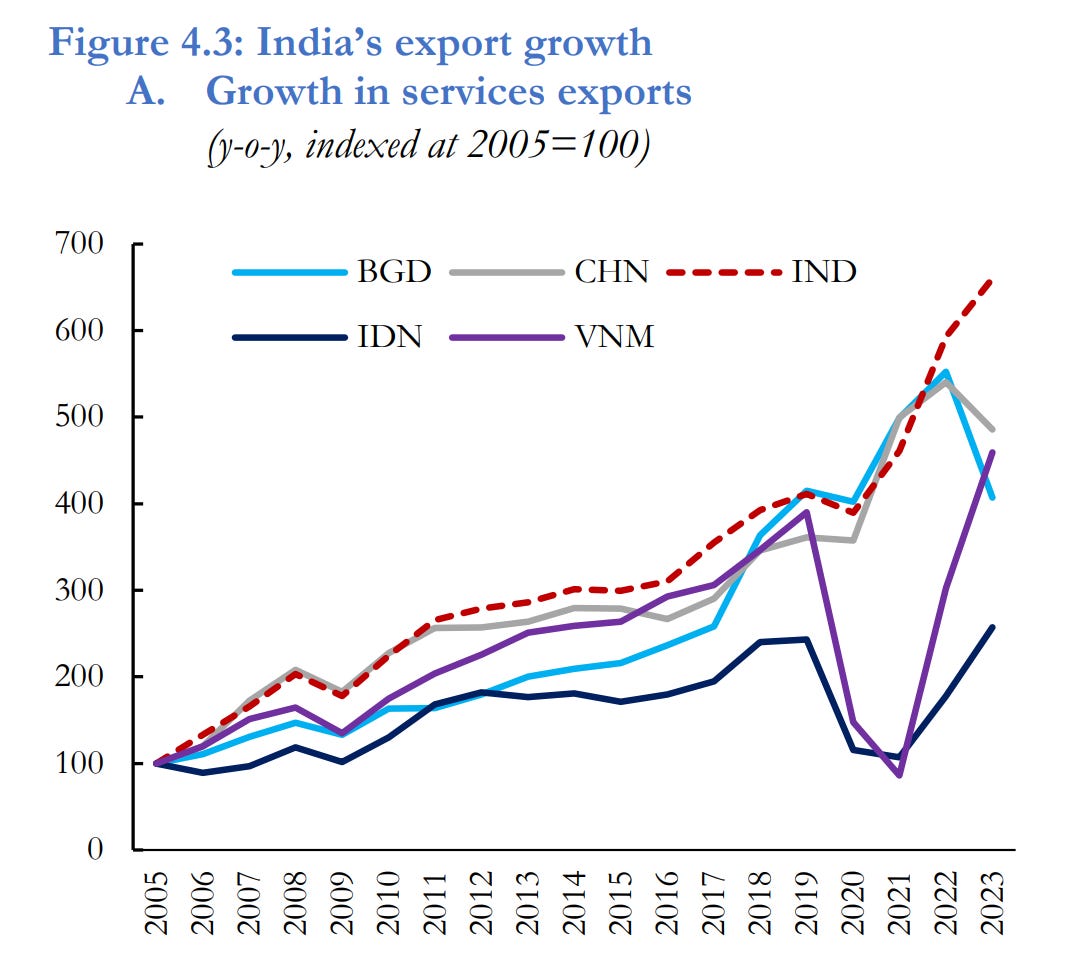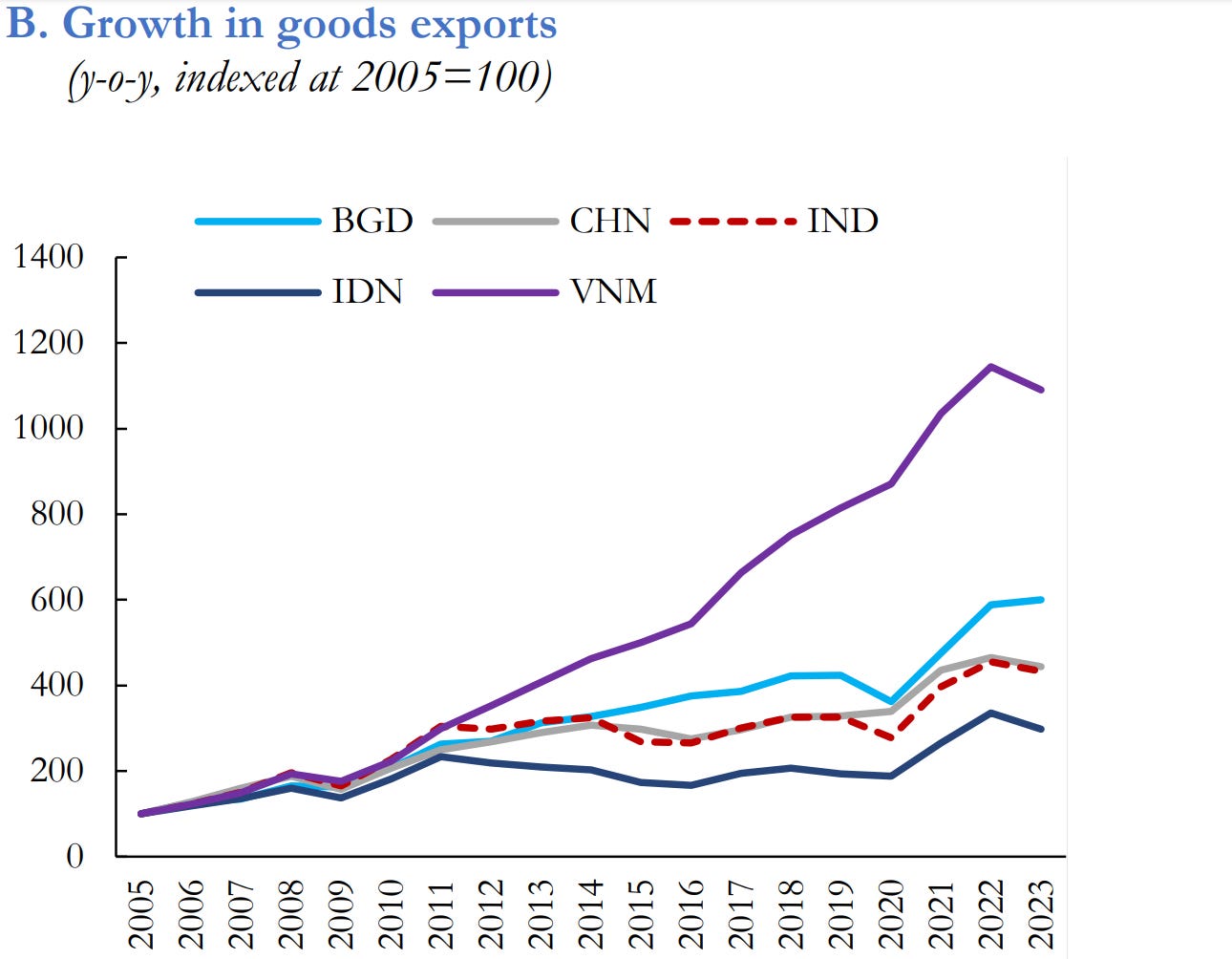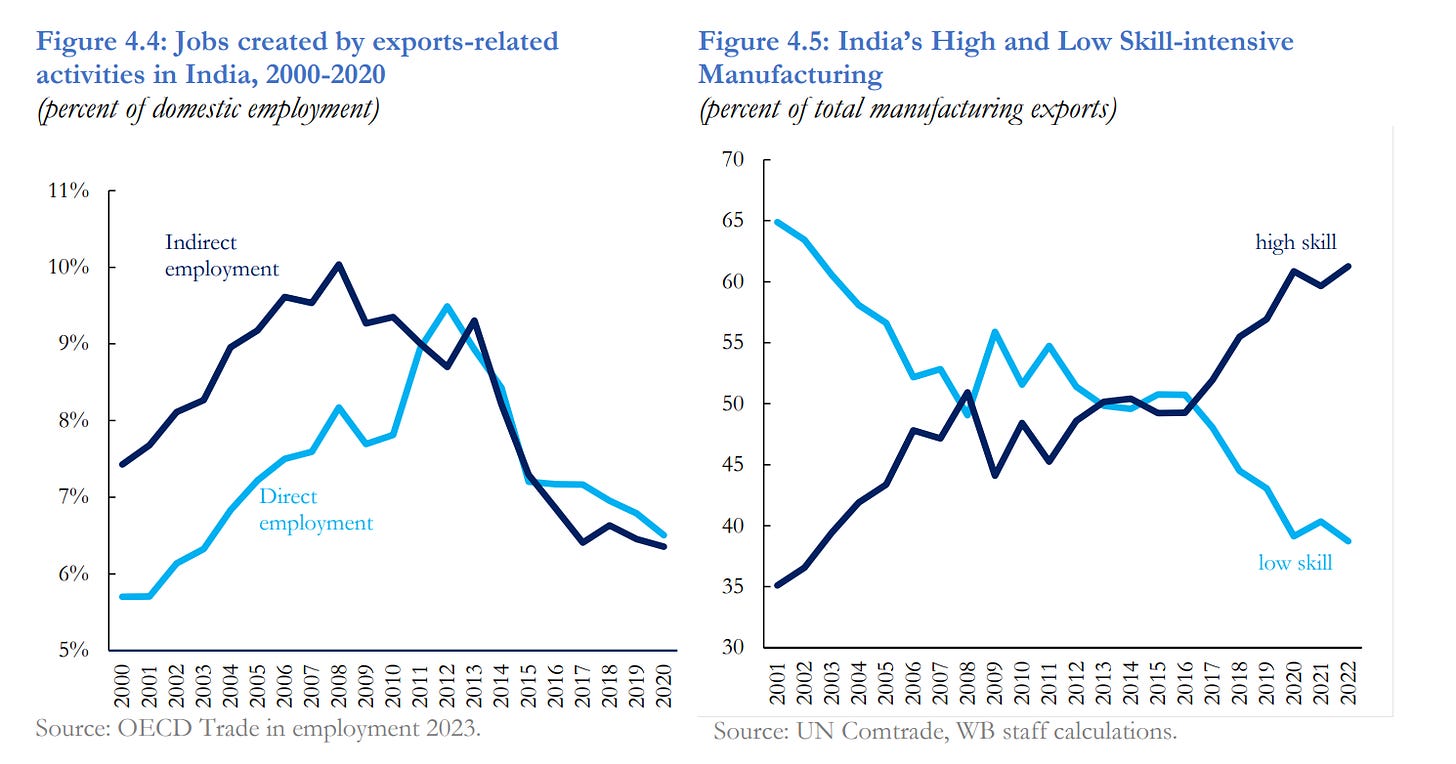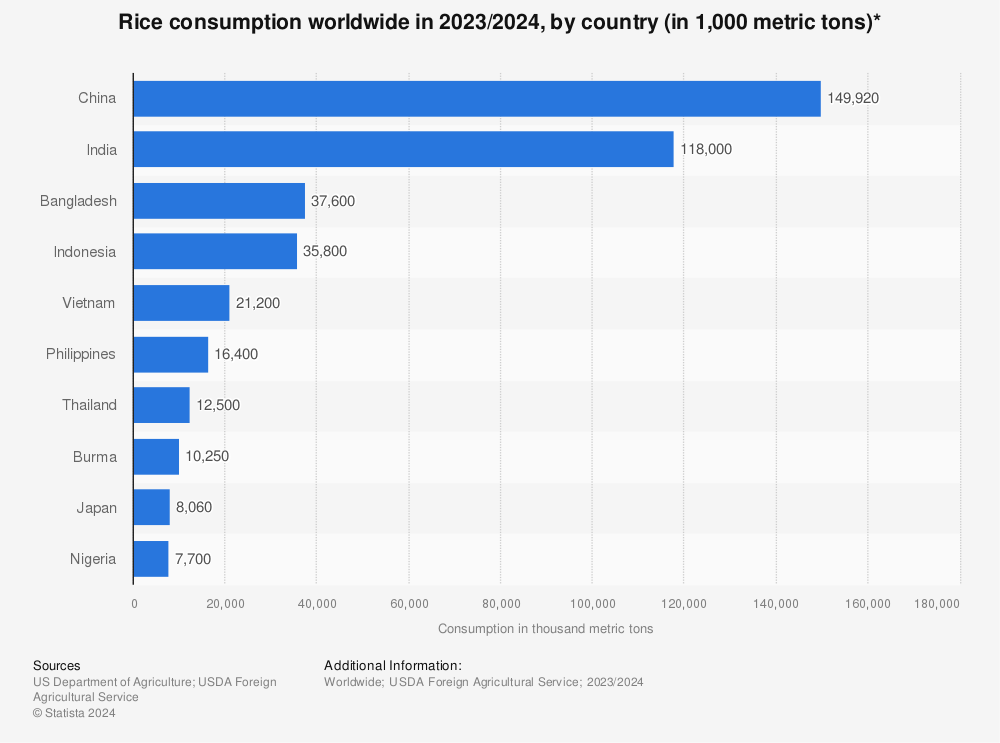Our goal with The Daily Brief is to simplify the biggest stories in the Indian markets and help you understand what they mean. We won’t just tell you what happened, but why and how too. We do this show in both formats: video and audio. This piece curates the stories that we talk about.
You can listen to the podcast on Spotify, Apple Podcasts, or wherever you get your podcasts and video on YouTube.
You can also listen to The Daily Brief in Hindi.
Today on The Daily Brief:
- SEBI wants to kill scammy advisors and PMS managers want in
- How’s the Indian economy doing?
- Why India’s rice market is making headlines and what it means for you
SEBI wants to kill scammy advisors and PMS managers want in
In June, SEBI proposed a new asset class aimed at filling a gap in the current investment landscape. This proposal is designed for investors with capital between 10 and 50 lakh rupees, a segment that falls between traditional mutual funds and Portfolio Management Services (PMS).
SEBI’s main concern is the spread of unregistered and unauthorized investment schemes targeting investors with this level of capital. These investors are in a bit of a grey area – they’ve outgrown the typical mutual fund options but don’t quite meet the high entry requirements of Portfolio Management Services (PMS).
Let’s break down the key aspects of this proposal:
First, SEBI is suggesting a minimum investment of 10 lakh rupees for this new asset class. This makes it a middle-ground option between mutual funds, which can be started with as little as 500 rupees, and PMS, which requires a minimum of 50 lakh rupees.
Second, and possibly more important, SEBI is proposing that these funds be allowed to use derivatives not just for hedging, but also for active market strategies. This would open the door to more sophisticated approaches, like long-short equity funds and inverse ETFs, similar to what we see in hedge funds or Alternative Investment Funds (AIFs).
Currently, mutual funds and PMS can only use derivatives for hedging. If an investor wants a more advanced, derivatives-based strategy, they have to look into AIFs, where the minimum investment is a hefty 1 crore rupees.
Additionally, SEBI has proposed loosening certain restrictions for this new class, including higher exposure limits for both equity and debt, increased sectoral limits, and more flexibility in Real Estate Investment Trusts (REITs) and Infrastructure Investment Trusts (InvITs).
This proposal has caught the attention of the Association of Portfolio Managers in India (APMI), a group representing the largest PMS managers. According to a recent article in The Hindu Businessline , they’ve asked SEBI to allow PMS managers to handle this new asset class as well. Currently, SEBI’s consultation paper only mentions mutual funds being eligible to offer this asset class, leaving PMS managers out.
To understand why APMI is pushing for this, it’s worth looking back at what happened in 2019. That year, SEBI raised the minimum investment for PMS from 25 lakh to 50 lakh rupees. This change hit the PMS industry hard, especially for smaller firms that were struggling to attract high-net-worth clients.
For APMI and its members, managing this new asset class would give them access to a wider group of investors, helping them overcome the challenges caused by the higher PMS threshold.
That said, SEBI seems to be leaning toward mutual fund houses to manage this new asset class. They’ve cited the existing infrastructure mutual funds have in place to handle daily transactions and their experience working with retail investors.
We’ll have to wait and see what SEBI ultimately decides. However, one thing is clear: if this new asset class gets the green light, it could give investors access to more advanced strategies without the steep entry barriers we see with traditional alternatives.
How’s the Indian economy doing?
The World Bank recently released its India Development Update, which gives a detailed overview of the Indian economy. We went through it so you don’t have to and have summed up the key points for you.
Let’s start with the good news. In the fiscal year 2023-24, India’s GDP grew by 8.2%, outpacing other major economies. This growth is reflected in India’s financial markets too. Indian equity markets hit all-time highs this year, with the total market value of India’s stock market now around $5 trillion. India’s share in the MSCI Emerging Markets Index also reached a new high at 20.5%.
Source: World Bank
One of the main drivers of India’s growth has been government investment. The central government increased its capital spending by 28%, focusing on infrastructure projects like roads, ports, and power plants. This push is helping to lay the foundation for future economic growth.
The manufacturing sector has also seen a big rebound. After shrinking by 2.2% last year, manufacturing grew by 9.9% in FY23/24. Lower input costs, especially thanks to lower global oil prices, helped fuel this growth. Sectors like construction and electronics have particularly benefited from public infrastructure investment and rising domestic demand.
India’s services sector, especially IT and finance, continues to be a strong part of the economy. Services grew by 7.6% in FY23/24, with IT and business services growing nearly 13% annually since 2000. These sectors now make up more than two-thirds of India’s services exports.
India’s services sector, especially IT and finance, continues to be a strong part of the economy. Services grew by 7.6% in FY23/24, with IT and business services growing nearly 13% annually since 2000. These sectors now make up more than two-thirds of India’s services exports.
Source: World Bank
However, not everything is rosy. Agriculture, which is vital for rural livelihoods, faced challenges. Growth in agriculture dropped to 1.4%, down from 4.7% the previous year. This drop was mainly due to unpredictable rainfall, showing how vulnerable the sector is to climate. However, this year’s monsoon looks promising, so there’s hope for a rebound.
The slowdown in agriculture has also affected the broader economy. Private consumption, which makes up about 60% of India’s GDP, fell to 4.0% in FY23/24 from 6.8% the previous year. Lower rural incomes have impacted household spending.
That said, consumption did pick up in the last quarter. Whether this is a temporary blip or the start of a strong recovery remains to be seen. High-frequency data points like air travel, car sales, and FMCG sales show that urban consumption is slowing down, while rural consumption is picking up. The overall impact on consumption growth is still uncertain.
On the inflation front, while overall inflation eased to an average of 5.4% in FY23/24, food inflation remained high at 8.9% in the first quarter of FY24/25, before dropping sharply to 5.4% in July 2024. These ups and downs are putting pressure on household budgets, especially for low-income families.
Looking ahead, India’s economic growth is projected to stay strong at 7.0% in FY24/25, despite a weaker global environment. A few key factors contribute to this positive outlook: the government’s big push in public investment, a possible recovery in agriculture, and easing inflation, which should boost private consumption. The services sector, especially IT and business services, also continues to show strong growth.
Looking even further, India is expected to double its current GDP of $3.5 trillion to $7 trillion by 2030, potentially becoming the world’s third-largest economy. This growth is supported by India’s favorable demographics.
India’s “demographic dividend” – the working-age population – is expected to last until at least 2055-56, peaking around 2041, when 59% of the population will be of working age. The middle class is also growing fast, with around a third of the population now falling into this category.
But there are challenges, especially when it comes to creating jobs. Despite strong economic growth, the connection between exports and job creation has weakened. Export-related jobs fell from 9.5% of total employment in 2012 to 6.5% in 2020. This disconnect is partly due to the nature of India’s exports.
Source: World Bank
India’s exports are increasingly moving towards more capital- and skill-intensive sectors like IT services and pharmaceuticals. While these sectors contribute significantly to economic growth, they don’t create as many jobs as labor-intensive industries.
Source: World Bank
To create more jobs, India needs to diversify its export basket to include more labor-intensive sectors like textiles, apparel, and footwear. These industries have traditionally provided significant employment, especially for women and less-skilled workers. However, India’s share of the global market in these sectors has been falling. For example, its share in global exports of apparel, leather, textiles, and footwear (ALTF) peaked at 4.5% in 2013 but dropped to 3.5% by 2022.
Meanwhile, countries like Bangladesh and Vietnam have been quicker to take advantage of global supply chain shifts. As China steps back from low-skill manufacturing, these countries have filled the gap. Bangladesh’s share in global ALTF exports rose to 5.1% in 2022, and Vietnam’s reached 5.9%. India has the potential to capture more of this market, which would boost both exports and job creation.
To seize this opportunity, India needs to address several challenges, including its trade policies. India has been leaning towards protectionism in recent years. The average Most Favored Nation tariff has risen to 18.1% in 2022, up from 13.4% in 2016. While these measures are aimed at protecting domestic industries, they might be slowing India’s integration into global value chains (GVCs). India’s participation in GVCs has been declining, with the use of imported inputs in exports dropping from over 25% in 2010 to about 15% in 2020. This reduces opportunities for technology transfer and job creation in export-oriented sectors.
Despite these challenges, India remains an under-allocated market for major Emerging Market portfolio managers compared to other countries, suggesting room for more foreign investment in the future.
To tackle these challenges and tap into new opportunities, India needs to:
- Diversify exports into more labor-intensive sectors while supporting high-skill industries.
- Lower trade barriers to improve competitiveness and integrate better into global value chains.
- Focus on skills development to prepare the workforce for both labor- and skill-intensive jobs.
- Improve logistics and trade facilitation to reduce export costs.
- Rethink trade agreements and regional partnerships to expand market access.
Considering the progress India has made, we are optimistic that the country can continue to grow at a healthy pace.
Why India’s rice market is making headlines and what it means for you
Rice is a staple in our diets, and thanks to India’s climate and farming conditions, we’ve become one of the largest producers and exporters of rice in the world.
When it comes to Basmati rice, India dominates the global market with over 80% of the total exports. Our Basmati rice is particularly popular in the Middle East, Europe, and the US. In fact, just last year, we exported more than 5 million tonnes of Basmati, bringing in nearly $6 billion to the country.
Given how crucial rice is for both domestic consumption and global trade, even a small policy change or shift in market conditions can have a ripple effect around the world. And that’s exactly what’s happening right now.
Let us break it down:
Last year, India faced lower rainfall and challenging weather, which hit rice production hard. This led to a reduced supply of rice, raising fears of rising prices. To tackle this, the Indian government banned the export of non-Basmati white rice in July to stabilize domestic supply and keep prices in check. The goal was to make sure we had enough rice at home before exporting it.
While the move made sense at the time, it led to some unintended consequences.
Rice exporters, trying to get around the ban, started mislabeling non-Basmati rice as Basmati. This allowed cheaper varieties to be exported under the premium Basmati label, which not only violated export rules but also caused chaos in the market. Prices became unpredictable, both in India and abroad.
In October 2023, the government stepped in again and lowered the Minimum Export Price (MEP) for Basmati rice from $1,200 per tonne to $950 per tonne to stop this mislabeling. For context, the MEP is the lowest price at which the government allows a product to be exported. By lowering it, the government aimed to reduce the incentive for exporters to cheat the system.
But just recently, the government made another big decision and completely removed the MEP for Basmati rice. This might be tied to the fact that rice is harvested in India between September and October. With harvest season increasing the supply of rice, prices could fall sharply. So, the decision to remove the MEP may be to prevent an oversupply situation from messing with the market even more.
This is important because any price changes affect farmers, exporters, and, of course, regular consumers like us.
In a perfect world, exporters want fewer barriers so they can stay competitive, farmers want to get the best price for their crops, and we want to buy rice at affordable prices. But governments have to juggle all these interests and find a balance that benefits everyone.
Tidbits
- Adani Enterprises and Wilmar International are planning to sell 13% of Adani Wilmar, valued at $736 million. This move is to meet the public shareholding requirement, which says they need to reduce their combined 88% stake to 75% by February. The goal is to ensure at least 25% of the company is publicly owned, as per regulations.
- Samsung’s facility in Sriperumbudur, Tamil Nadu, is facing strikes over wages and working conditions. Workers are demanding a wage increase to ₹36,000 a month over the next three years, up from the current ₹25,000. This situation could impact Samsung’s production and possibly affect its market share in India.
- Jindal Steel is taking a big step towards sustainability by integrating green hydrogen into its steel production in Odisha. They’re aiming for a capacity of 4,500 tons annually by 2025. Additionally, they’ll supply 36,000 tons of oxygen to their Angul steelworks, positioning Jindal as a leader in eco-friendly steel production.
Thank you for reading. Do share this with your friends and make them as smart as you are ![]()
If you have any feedback, do let us know in the comments


